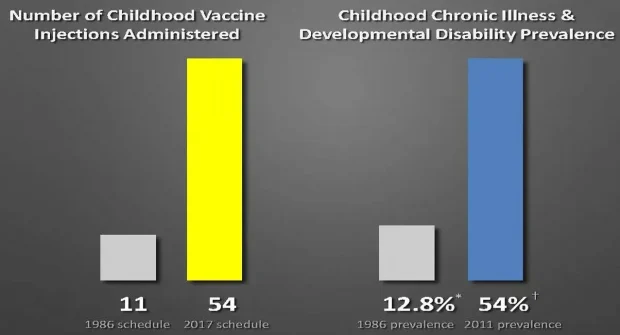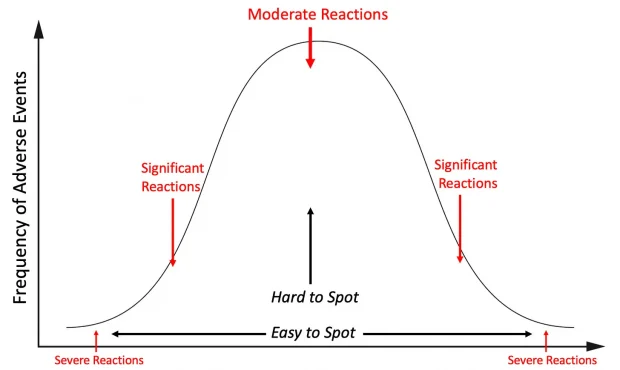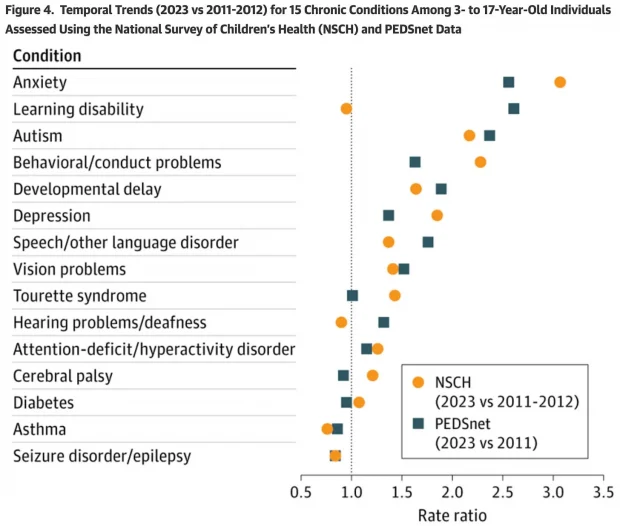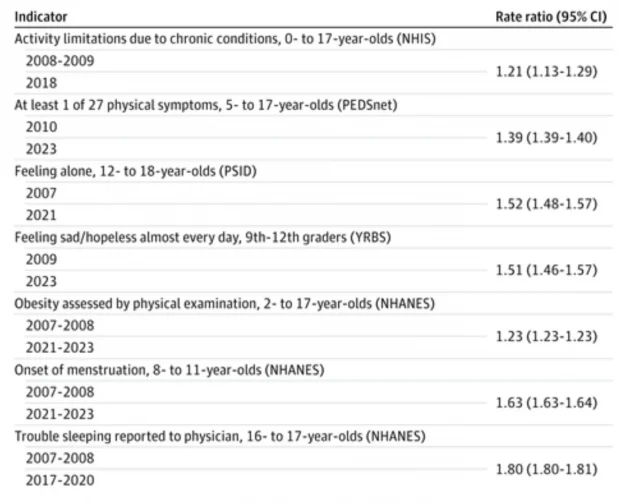This newsletter was created with the goal of helping others, and over time, I’ve received many messages from people with important questions I’d love to answer. However, writing each article takes a considerable amount of time—just as an example, I’ve spent the past month working on the final installment of the DMSO series, and it’s still not quite finished. Because of this, I’m not always able to respond individually to every inquiry I get.
While I truly wish I could, the most practical solution I’ve found is to host monthly open threads. These provide readers with a space to ask any outstanding questions—especially those left over from previous content—and I make it a priority to respond. Having all the questions in one place also makes it easier for others to benefit from those answers as well.
For each of these open threads, I like to tie in a topic I’ve been meaning to discuss—usually something I’ve been thinking about but haven’t felt warrants a full-length article. This time, I want to focus on a topic near and dear to my heart, healthy children.
The Chronic Disease Epidemic
One of RFK’s rallying cries has been that our children are being stricken by an onslaught of chronic diseases and that this is undermining the strength that is our future, and his organization, the Children’s Health Defense frequently references this chart:

Note: that data comes from this study and this study.
Since trends in motion tend to persist unless significant measures are taken to shift them, as a recently published study confirmed, this problem has continued to worsen.
Nearly half of all children receiving care in the PEDSnet multicenter network had a chronic health condition, while one-third of children in the general population experience from 1 to 15 parent-reported chronic conditions. Furthermore, obesity now affects 20% of children, and early puberty is increasingly common among girls, with 1 in 7 beginning menstruation before age 12 years. Temporal trends also showed deterioration in sleep health and increasing limitations in activity, alongside worsening of an extensive range of physical and emotional symptoms.
In turn, the study’s data shows that the rates of these conditions have roughly doubled over the last 12 years.
Likewise, many other things have rapidly gone awry
Note: this study also highlighted a myriad of other issues, such as our children being more likely to die than other developed nations, in large part due to sudden infant death syndrome (a condition strongly linked to vaccination).
The Other Half of The Picture
While I agree with the gravity of these findings and the urgency to re-evaluate our vaccination program, I feel they only tell half of the story. That is because:
• There are many other factors besides vaccines that also adversely affect children’s health.
• All illnesses (particularly those which result from being poisoned) tend to distribute on a bell curve, so that the severe, easy to spot reactions are only a minority, whereas less severe (and harder to spot) reactions are much more common.

To some extent this is recognized, as autoimmune disorders (a frequent complication of vaccination) are much more common than vaccine sudden deaths—but in most cases it’s missed.
On the one hand, this is due to the “measurement” problem in science, where scientific studies can generally only be conducted if they have a clear metric by which to measure things, thereby creating clear, reproducible data. This becomes an issue when an agent has so many different symptoms that it can make (many of which are quite subtle), they typically will be written off as anecdotal unless they are deliberately traced, and as a result, many common side effects of vaccines are never formally associated with them.
Note: the most recent glaring example of this happened with the COVID vaccines where trial participants were only given a small list of (relatively benign) symptoms they could check off (e.g., fevers or fatigue) so as a result, those were the side-effects that appeared in the published trial reports. Likewise, V-Safe, the CDC program designed to monitor vaccine side effects, did the same; however fortunately, it also included a free text field where participants could enter other symptoms—most of which were never publicly analyzed (and which the government fought in court to avoid disclosing). Because of all of this, the majority of the medical field assumed most of the side effects patients reported from the vaccines (despite many others experiencing the same symptoms) were anecdotal and had nothing to do with the vaccines).
On the other hand, it’s because many of these pathological changes are more subtle and more complex to spot, so since people aren’t trained to notice them, and have gradually become habituated to all of it “being normal” they don’t realize how much things have changed.
Note: doctors are virtually never trained to recognize the subtle neurological injuries which follow vaccination (which indicate damage has also occurred within the brain).
The Hidden Chronic Disease Epidemic
For as long as I can remember, many natural healers have told me that they can normally spot the unvaccinated children as they are much healthier and vibrant than their peers. For example, after I explained some of the ways this can be identified, two readers shared:
Thanks to this substack, I am now the unofficial medical godfather of 4 unvaccinated babies across several families. All are incredibly healthy with none of the typical problems associated with the microstrokes. All have been described by strangers and family as, “wow, your baby is really aware and paying attention. It’s like they’re sentient, I don’t know how else to say it”. And I am sad when I see those other people’s babies because I know they were supposed to be more, undergo less suffering when I hear their random high pitched shrieks.
Last year I attended a fundraiser auction to raise money for local Mennonite schools. Many families, many children. I was struck by the fact that there was a light, a brightness, in these children’s eyes that I had not seen for decades in other children. The Mennonites here do not vaccinate. Now I understand. It hurts my heart.
Likewise, I received this email a few weeks ago from a mother who followed all of my suggestions for a healthy child:
Other than a minor rash, my daughter has never had any health issues. She’s been ahead on all her developmental milestones, and from the very beginning, she’s been incredibly alert and engaged with her surroundings. She’s always exploring, and only cries when there’s a clear reason—if she’s hungry, tired, hurt, or not getting the attention she wants.
When we’re out in public, she smiles at everyone and tries to make friends. People constantly stop us to comment on how beautiful and full of life she is—some even ask if they can hold her. It wasn’t until I had her that I realized how unusual that kind of energy is in a baby. So many infants I see seem withdrawn, like they’re in a kind of daze, avoiding eye contact, and often looking genuinely sickly.
I’m incredibly grateful we were spared that, but at the same time, I’ve started to feel increasingly unsettled by what I see around me. I think a lot about what other parents must be going through—especially single mothers trying to raise kids on limited incomes—and I honestly don’t know how they manage.
One of the most challenging things when you “step out of the matrix” is becoming able to see (fairly disturbing) things all around you, and one of the key reasons why I appreciate stories like these three is because they illustrate that’s what’s been hidden right in front of us is at last becoming more and more visible.
Screens and Children
As cell phones and tablets became widely available, I would see more and more parents (who had their children with them) at medical visits using devices to keep their children content. In many cases, if a device was withdrawn, the children would have a fit (at which point the device was returned to them).
This greatly concerned me, as I could see that the way the screens pulled them in was not having a healthy effect on the child’s developing nervous system (which is why I advise parents to use audio-only media, such as small devices that play children’s songs).
Note: quite a few social media executives have said they have tremendous regret about what their products (intentionally designed to be addictive) have neurologically done to our children. Likewise, many articles have been written about how Silicon Valley tech executives send their kids to an alternative school where phones and screens are banned.1,2,3,4,5
In this publication, I’ve written numerous articles on the mass neurological damage being caused by vaccination.
In one, I showed that neurologic damage from vaccination has been a well-known problem for over a century (that previously was widely reported in the medical literature) and that conditions like autism used to be widely referred to as “mentally retarded,” a change I strongly suspect was done to obfuscate the issue (as autism exists on a wide spectrum, so hearing that someone “became autistic” is much easier to push into the back of one’s mind than if a child rapidly “becomes retarded” after a vaccine).
In the other, I highlighted that the original pertussis (DPwT) vaccine was particularly problematic as it would often cause encephalitis (which was often accompanied by piercing screams) and then leave the child with lasting brain damage. One author who studied this extensively made the fascinating observation that after the DPwT vaccine entered the market in the 1940s, a variety of societal changes followed which matched when the initial cohort who received the DPwT vaccine reached each age bracket.
For example, in the 1950s, a condition termed “minimal brain damage” [MBD] was coined (with the defining characteristic of it being hyperactivity), which before long became “perhaps the most common, and certainly one of the most time-consuming problems in current pediatric practice”. The symptoms of MBD (as defined by America’s Public Health Service and the American Psychiatric Association) had a significant overlap with what was seen after encephalitis, DPT injuries, and what was associated with autism.
In the 1960s, Ritalin came into use for treating attention deficit disorder and hyperactivity, and minimal brain damage was gradually phased out and replaced with ADHD (a condition independent studies show a 3-20 fold increase from vaccination).
I mention all of this because I have had a nagging suspicion that something similar is happening with screens, as they both draw in and pacify neurologically injured children. Furthermore, patterns set in childhood are very difficult to shake for life, and as we are now starting to see a variety of signs the first generation raised on technology has a variety of mental health issues linked to their technology exposure, which further argues for avoiding screens at an early age.
Note: the mother I mentioned above said one of their major challenges with her daughter has been keeping her away from screens (as she is drawn to them whenever they are left open), and as a result they are using screens less now.












